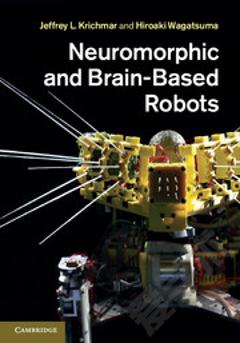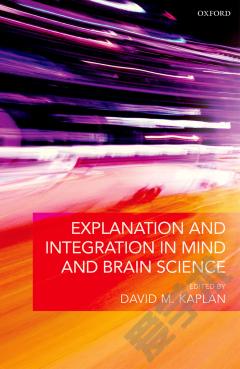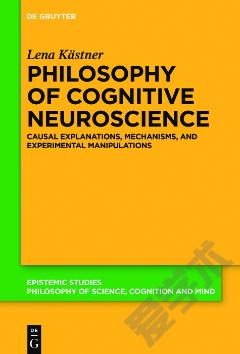Explaining the Brain —— Mechanisms and the Mosaic Unity of Neuroscience
----- 解释大脑
Preface Chapter 1. Introduction: Starting With Neuroscience 1 Introduction 2 Explanations in Neuroscience Describe Mechanisms. 3 Explanations in Neuroscience are Multilevel 4 Explanations in Neuroscience Integrate Multiple Fields 5 Criteria of Adequacy for an Account of Explanation Chapter 2. Explanation and Causal Relevance 1 Introduction 2 How Calcium Explains Neurotransmitter Release 3 Explanation and Representation 4 The Covering-Law Model 5 The Unification Model 6 But What About the Hodgkin and Huxley Model? 7 Conclusion Chapter 3. Causal Relevance and Manipulation 1 Introduction 2 The Mechanism of Long-Term Potentiation 3 Causation as Transmission 3.1 Transmission and Causal Relevance 3.2 Omission and Prevention 4 Causation and Mechanical Connection 5 Manipulation and Causation 5.1 Ideal Interventions 5.2 Invariance, Fragility, and Contingency 5.3 Manipulation and Criteria for Explanation 5.4 Manipulation, Omission, and Prevention 6 Conclusion Chapter 4. The Norms of Mechanistic Explanation 1 Introduction 2 Two Normative Distinctions 3 Explaining the Action Potential 4 The Explanandum Phenomenon 5 Components 6 Activities 7 Organization 8 Constitutive Relevance 8.1 Relevance and the Boundaries of Mechanisms 8.2 Interlevel Experiments and Constitutive Relevance 8.21 Interference Experiments 8.22 Stimulation Experiments 8.23 Activation Experiments 8.3 Constitutive Relevance as Mutual Manipulability 9 Conclusion Chapter 5. A Field-Guide to Levels 1 Introduction 2 Levels of Spatial Memory 3 A Field-Guide to Levels 3.1 Levels of Science (Units and Products) 3.2 Levels of Nature 3.21 Causal Levels (Processing and Control) 3.22 Levels of Size 3.23 Levels of Composition 3.231 Levels of Mereology 3.232 Levels of Aggregativity 3.233 Levels of Mere Material/Spatial Containment 3.3 Levels of Mechanisms 4 Conclusion Chapter 6 Nonfundamental Explanation 1 Introduction 2. Causal Relevance and Making a Difference 3 Contrasts and Switch-Points 4 Causal Powers at Higher Levels of Mechanisms 5 Causal Relevance among Realized Properties 6 Conclusion Chapter 7. The Mosaic Unity of Neuroscience 1 Introduction 2 Reduction and the History of Neuroscience 2.1 LTP's Origins: Not a Top-Down Search but Intralevel Integration 2.2 The Mechanistic Shift 2.3 Mechanism as a Working Hypothesis 3 Intralevel Integration and the Mosaic Unity of Neuroscience 3.1 The Space of Possible Mechanisms 3.2 Specific Constraints on the Space of Possible Mechanisms 3.21 Componency Constraints 3.22 Spatial Constraints 3.23 Temporal Constraints 3.24 Active Constraints 3.3 Reduction and the Intralevel Integration of Fields 4 Interlevel Integration and the Mosaic Unity of Neuroscience 4.1 What is Interlevel Integration? 4.2 Constraints on Interlevel Integration 4.21 Accommodative Constraints 4.22 Spatial and Temporal Interlevel Constraints 4.23 Interlevel Manipulability Constraints 4.3 Mosaic Interlevel Integration 5 Conclusion: The Epistemic Function of the Mosaic Unity of Neuroscience
{{comment.content}}








 京公网安备 11010802027623号
京公网安备 11010802027623号